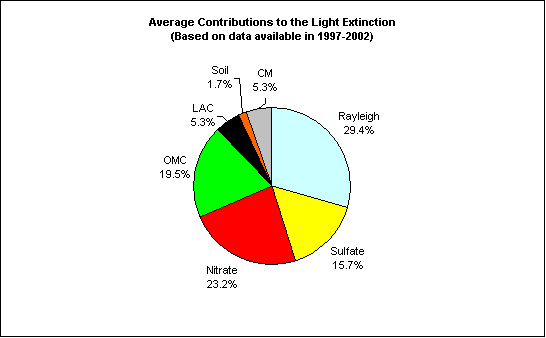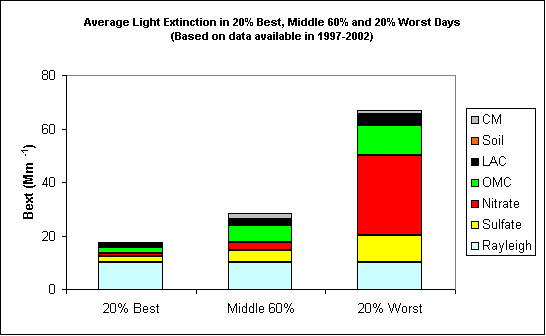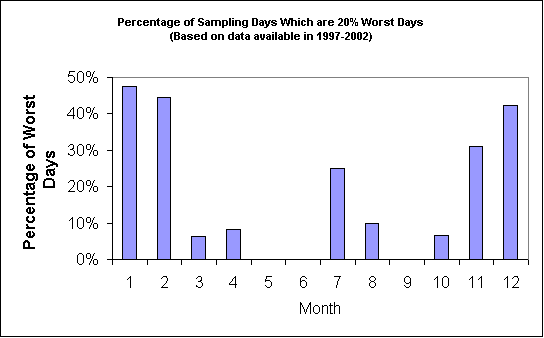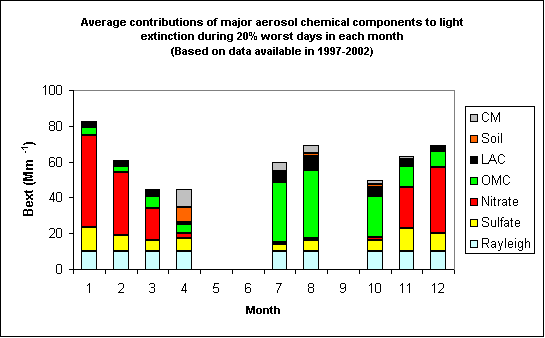
HECA1 (Hells Canyon, OR, Lat. 44.9932, Long. -116.8395, Alt. 625) Print-Friendly Version Print-Friendly Version (B&W)
2 year and 4 month aerosol data are available in Hells Canyon during the sampling period of 1997 - 2002. As shown in Figure 1, the overall average total light extinction coefficient (Bext) is 34.1 Mm-1 (Visual Range ~ 114 Km; Deciview ~ 12.3). The average PM2.5 mass concentration is 3.9 mg/m3. The average contributions of the major aerosol components to Hells Canyon haze are particulate sulfate 15.7%, nitrate 23.2%, organic matter (OMC) 19.5%, elemental carbon (light absorbing carbon, LAC) 5.3%, fine soil 1.7% and coarse mass (CM) 5.3%.

Figure 1 Average contributions of major aerosol chemical components to light extinction (Based on data available in 1997-2002) (B&W)

Figure 2 Average contributions of major aerosol chemical components to light extinction in 20% best, middle 60% and 20% worst days (Based on data available in 1997-2002) (Data Table) (B&W)
As Figure 2 indicates, the average aerosol light extinction coefficient (Bext – Rayleigh Scattering (10 Mm-1)) during the 20% worst days is 56.9 Mm-1, which is about 7.4 times of the value of 7.7 Mm-1 during the 20% best days and 3.1 times of the value of 18.5 Mm-1 during the middle 60% days. Nitrate is the largest contributor to aerosol light extinction during the 20% worst days, and the contribution of nitrate to aerosol light extinction is ~ 53% in worst days. OMC also contributes ~20% to aerosol light extinction in the worst days.
Figure 3 suggests that the highest occurrence of the 20% worst days happened in the winter, in which more than ~40% of the sampling days are the 20% haziest days at Hells Canyon. As shown in Figure 4, nitrate is the largest aerosol contributor to haze in the winter, with a contribution of ~50 - 60%. Dust (fine soil + CM) contributes ~ 40% to haze in April, and OMC contributes more than 50% in July and August.

Figure 3 Percentage of sampling days that are 20% worst days in each month (Based on data available 1997-2002) (Data Table) (B&W)

Figure 4 Average contributions of major aerosol chemical components to light extinction during 20% worst days in each month (Based on data available 1997-2002) (Data Table) (B&W)